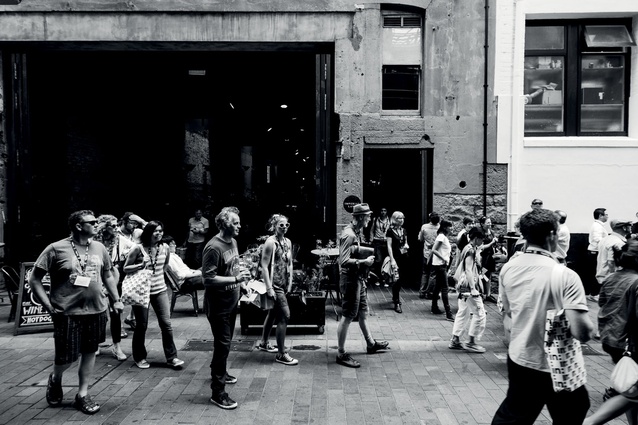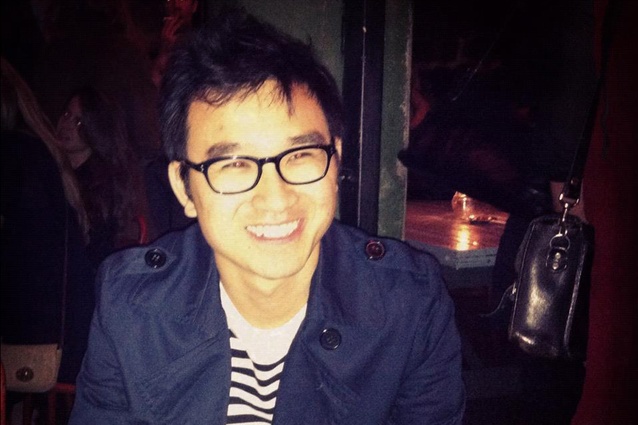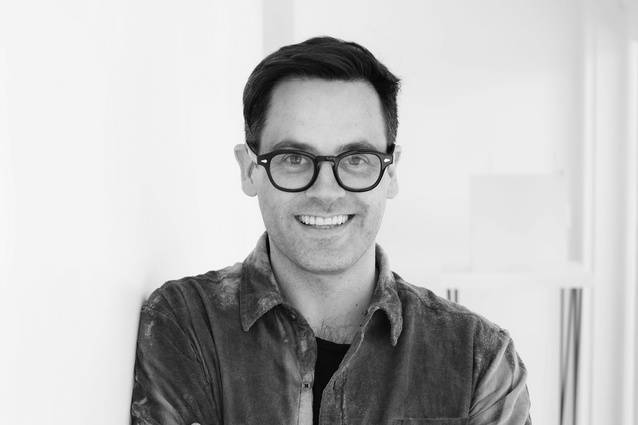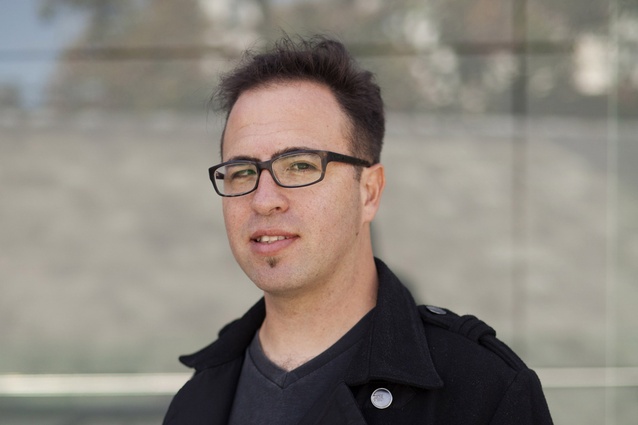NZIA revisited
Editor of Interior and Urbis magazines Federico Monsalve sat down with Aaron Paterson and Patrick Loo to theorise, reminisce and solve the woes of the built world after in:situ,the New Zealand Institute of Architects’ 2015 Conference (10–13 February). Here is an excerpt from our chat.
Federico Monsalve: Any high point in the conference?
Aaron Paterson: Sam Jacob. He looks at architecture a bit differently from the sterile modernism that you see.
FM: It felt almost like a literary theory. He’s looking at narrative and he’s looking at semiology… which was super-interesting.
AP: It was. His A Clockwork Jerusalem at the Venice Biennale was one of the reasons why we really wanted him out here; and it was a very different exhibition compared to its New Zealand [counterpart]. He did a massive swathe of history, incorporating everything from Cliff Richard to William Blake and William Morris and some quite mystical elements and making the argument about the planners of modernism… that their ideas were based on old ideals, old inspiration and, actually, they were doing something incredibly radical at the time.
FM: Very postmodern.
AP: Yeah, it is and he sort of thinks that postmodernism is an unfinished project, which is quite interesting.
FM: But it’s quite a different idea from what Sarah Whiting was exploring because she was often talking about the ‘perceived’ end of theory.
Patrick Loo: No, no, I think she was questioning why it is that people are feeling it’s the end of theory or that theory is not relevant to their practice at the moment; that’s how I took it.
AP: Yeah because one article she wrote with Robert Somol [‘Notes around the Doppler Effect and Other Moods of Modernism’ Perspecta, 2002] questioned how students would put forward these really elegant problems and highlight all these things that were wrong but then just sort of be particularly blank about any solution. But it wasn’t saying: there’s the end of theory.
FM: She did sort of highlight how buildings these days are, increaisngly, being judged in terms of sustainability and building performance, and all those parameters are kind of supplanting theory. People are much more concerned with how the building breathes and how much it pollutes… but moving along… Te Aranga Māori section; did you guys get to see it?
PL: I enjoyed the panel discussion afterwards. Rewi was talking about student projects (he’d been teaching at the university) and how they’ve been dealing with how to come up with an architectural or spatial identity that represents this country at this point in time.
FM: And how you do it without either treating architecture like a museum piece or using trite symbolism, or treating Māori cultural icons as tokenism. He used the term “Māorify the object”, which I thought was great.
PL: Yeah, he was talking exactly about the non-clichéd kinds of response that maybe, perhaps in the past, we’ve been stuck with, so that was really interesting.
AP: Yeah and just the idea, as Rau Hoskins was saying, that you have to bring the people along if you want to make a new sort of formal understanding of Māori architecture and things; I thought this was really interesting. I mean some of the projects that Rewi was showing were incredibly avant-garde but I guess they’re a sort of communal place between cultures coming together and what that might look like.
FM: From an Australian perspective: the Troppo guys [Phil Harris and Adrian Welke] seemed to have a real grasp of what their vernacular is.
AP: Yeah, that’s their whole thing really: just trying to understand the climate and how it works and how to make beautiful places and, yeah, it’s a very traditional Australian way of working. But then you see the likes of Andrew Maynard from Melbourne who just, you know, is so far removed from that. He is interested in key ideas that have been translated into buildings and doing other things outside of architecture.
FM: Like making his irreverent [suburb-eating] robots!
AP: Yeah, yeah, doing stuff like that but also making anything kind of heroic: just your ubiquitous alteration suddenly becomes this heroic thing in the back of your house which kind of changes your life and I think that’s really cool. I thought that that sort of very strategical small practice was really applicable for New Zealand small practices as well.
FM:Were there any lessons that you guys think local architecture firms could take from the conference? Also anything you wish had been included but wasn’t?
AP: I think there was one thing I really did notice from the New Zealand session about working overseas. We had just had ‘Unconventional Practice’ [a session hosted by Aaron Paterson] where our younger architects were self-building: doing really community-based things. Then we had Ana Vélez talking about social housing and making a difference in Colombia and then Kunlé Adeyemi talking about his school and his radio station building: you know, real social projects. But then we had New Zealand architects working overseas doing only high-end projects: resorts, a massive building in China… I just thought that it was really interesting that, when we’re talking about us working overseas, our sort of thing was really about the money. They were really getting a consumerist take to the max.
PL: One thing I would have liked more of during the conference… were speakers who aren’t architects but definitely have a direct relationship to architecture and who can help give us new perspectives on what we’re doing as practitioners. Rod [Oram] gave some economic outlines to maybe what’s happening in this country and what maybe to be prepared for in the future and I just wish he’d gone with that a bit more.
FM: That session tied really well with the session on the Hobsonville housing project. What are your thoughts about it?
PL: Well, I haven’t experienced that kind of density, not just in the fact that they’re creating so many new houses at one time but sheer density. It’s foreign, I guess, in some ways and that takes a little bit of time to get used to. But, what was interesting with Mark [McGuinness from Willis Bond] is he’s looking at the big picture, trying to get a good outcome across the board and trying to do whatever it takes to make that possible, which is great. Perhaps sometimes we forget because we can be too fixated on a singular object and that’s our comment rather than trying to see what the project is trying to do, to create a whole.
FM: Definitely; seeing the context and how those individual pieces will create a whole.
PL: It’s nice to hear developers who, genuinely, are trying to create good community spaces for people.
FM: Overall, the conference didn’t seem to focus on interiors at any stage.
PL: No, it didn’t talk about interior in a real specific fashion but I don’t think it was about exterior in any specific fashion either. It was trying to talk about something a bit more than that: what’s driving people, what’s driving projects.
FM: It was more about overarching ideas that are driving design in general.
AP: Yeah, it was a lot of people from around the world, who are working on different coalfaces really: like really different modes of practising architecture that we have today. Architecture now is just so diverse and multifaceted that it’s very hard to make a coherent sort of over-arching idea.
PL: Yeah, Pip commented on that last night in his closing; you bring them here and you let them do what they want to do and it’s up to us really to try and thread the threads. You can see links between different people.
To read more about the conference, click here.













